Great summer heat: how to help your plants through the hot summer

Jumping into the water, enjoying an ice cream or making yourself comfortable in the shade of a big tree – fortunately we have enough opportunities to cool off a little during the hot summer days.
But what about our vegetable plants? You can also make the heat more bearable for them! We’ll show you how to do that in this article.
Why do plants need heat protection?
Just as certain plant species can only tolerate certain minimum temperatures, they also have their temperature limits at the top. Some plants are more heat tolerant, some less. Plants can suffer damage from temperatures above 37 – 38 °C. Once the thermometer exceeds 40 °C, proteins in the plant cells begin to decompose. This damages our vegetable plants.
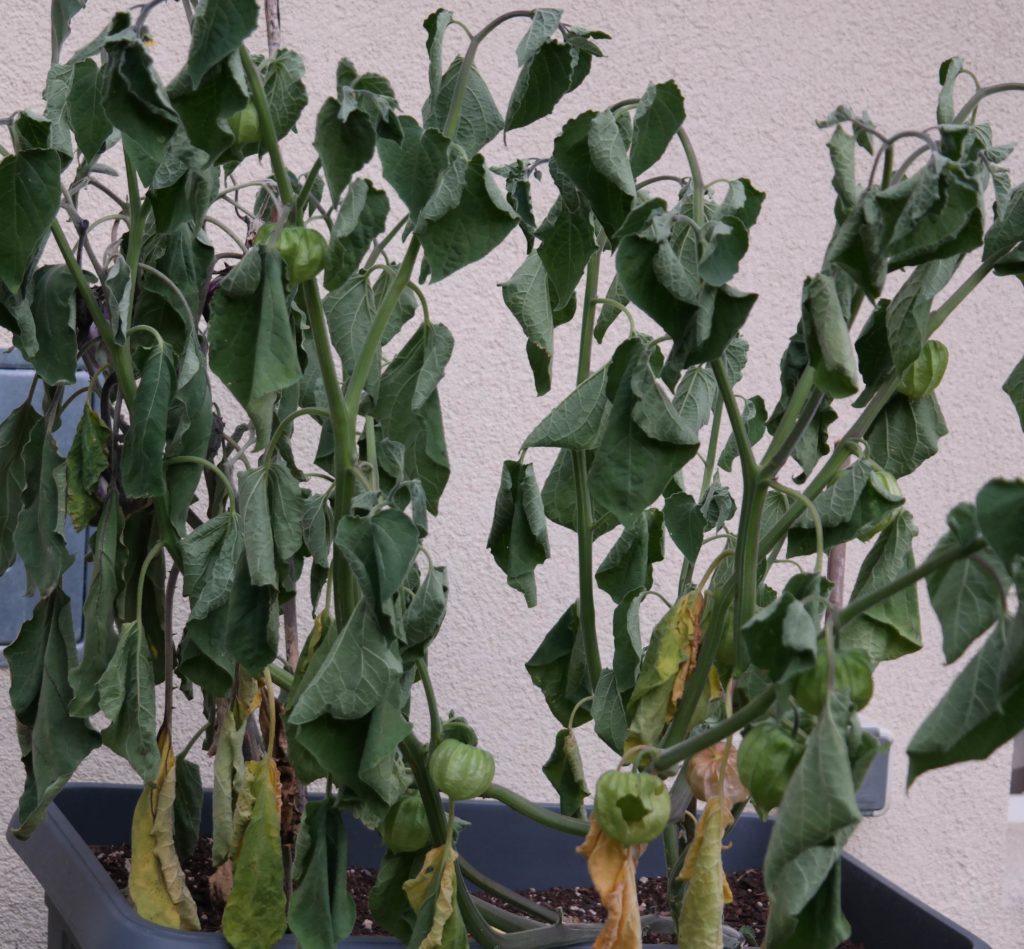
How to protect your plants from the summer heat
Since plants cannot run away, they are at the mercy of temperatures without protection. Even though they have developed measures for self-protection over the course of thousands of years, most of the vegetable and ornamental plants used in our country are unable to withstand the new heat records. You can remedy this with a few simple measures.
Provide shade
Mixed cultures in the vegetable patch
In a mixed culture, larger, more heat-tolerant plants (e.g. tomatoes) protect their smaller neighbors, e.g. salads or kohlrabi, who would otherwise find it too hot. Other mixed cultures are peppers or melanzani (both love the heat) with leek or cabbage. Beans and beets feel comfortable in the shade of zucchini, cucumber or melon.
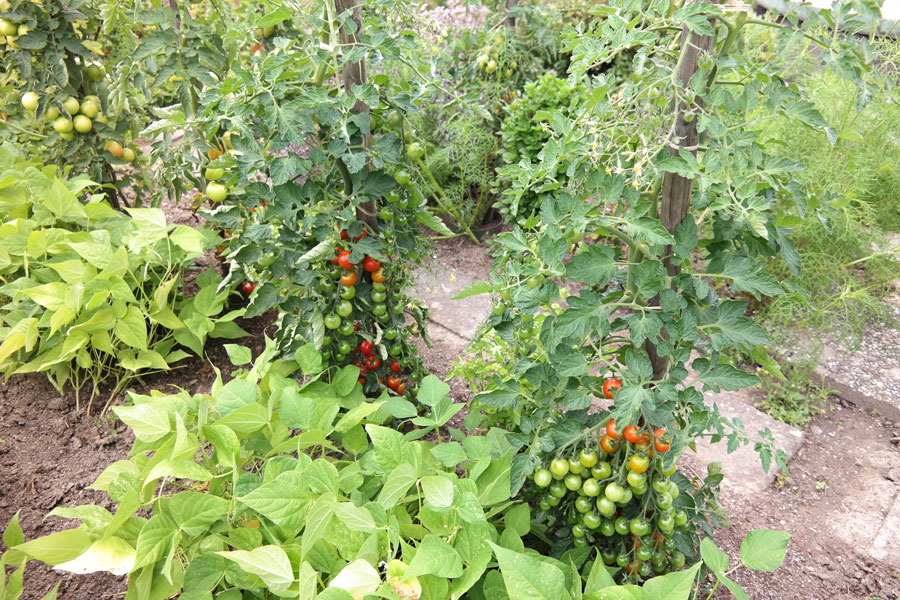
Stretching a shadow net
There are already special shade nets that filter the sun’s rays and prevent plant burns. Never lay the net directly on the plants, but stretch it on a scaffold to allow sufficient air circulation. Otherwise the heat will accumulate under the net.
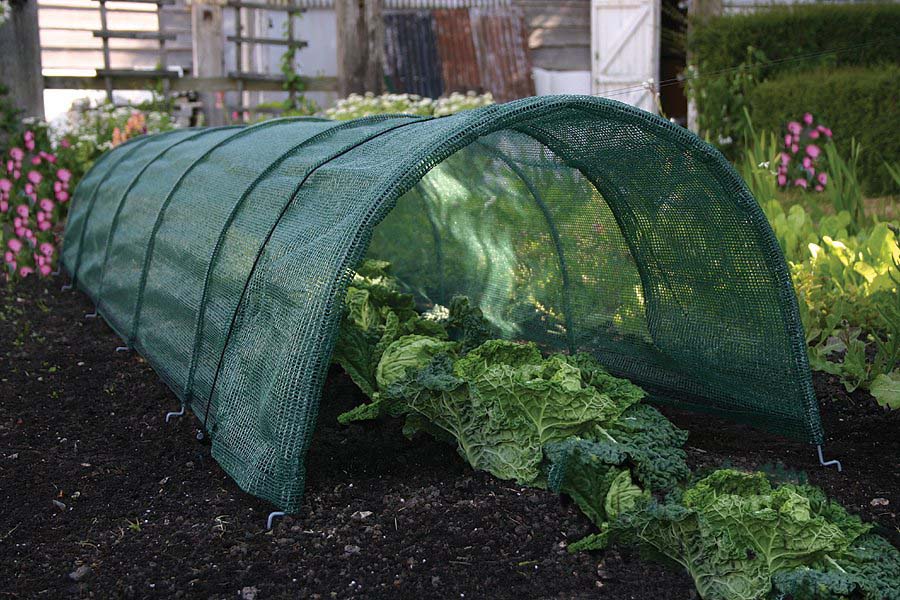
No shadow net? A sunshade will do!
Do you only have a small bed/high bed and shading with nets is too tedious for you? A simple parasol will do the trick! Just stretch it out when you need it. When the sun goes down, you can put it away right away.
The proven cool wet? Yes, but please do it right!
What could be more refreshing than jumping into the pool or a mountain lake? Let’s spray the plants with cold water and the heat problem is solved, right? NO!
If you pour cold water over your plants on a hot afternoon, they will suffer a shock and need time to recover and continue growing. In addition, drops of water that land on the leaves can cause burns. They act like a burning glass that amplifies and concentrates the sun’s rays.
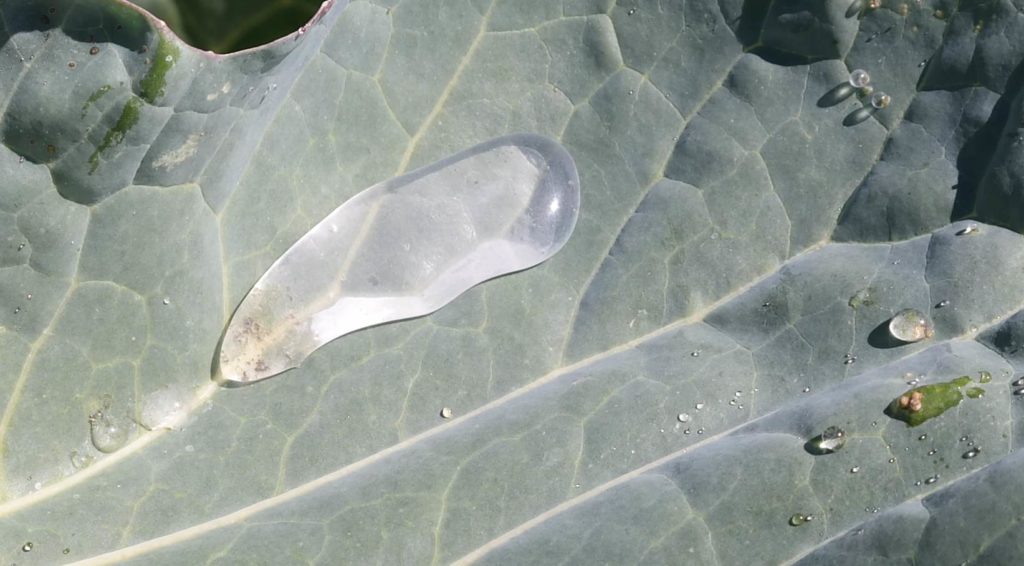
Water is nevertheless indispensable for plants. It transports nutrients from the roots to the leaves and vice versa the sugar produced in the leaves to storage organs such as roots, heads or tubers. Water exerts pressure on the plant cells and thus ensures that the plants stand upright.
The plants use the water to cool themselves down. They convert liquid water into steam. For this process they need energy, which they take directly from the air. This creates what is known as evaporative cooling, which means that the air around the plant becomes slightly cooler. The more water the plants have available in the soil, i.e. at their roots, the better they can obtain this cooling effect. That is why it is important to water regularly on hot days.
But when and how do you water best?
The most natural and best “drink” for all garden plants is rainwater, as it is less hard than tap water. If you don’t have a way to collect rainwater, it is best to fill up your watering can or water barrel a few hours before watering. This way the water can already warm up.
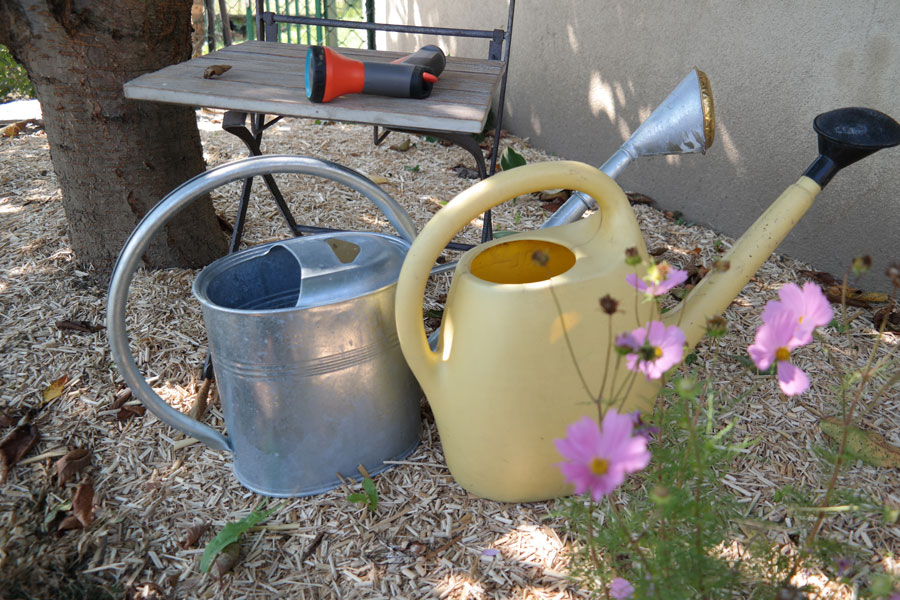
The optimal time for watering is in the morning. The soil is still cool and moist from the morning dew. It can better absorb and hold the water for watering. Watering in the evening is of course also possible, but there are two risks:
1.danger of fungal diseases: If the leaves remain moist during the night fungal diseases on the leaves are more likely. Especially flour dew on pumpkin, zucchini, cucumber and melon.
2 In a snail year, evening watering promotes the slimy creepers’ desire for salad etc. even more. They come out of their shelters in the evening and are especially happy about a friendly, humid environment.
Better than adjusting your time management to watering is to adapt the watering system to your needs. A small luxury that pays off in the long run is to switch from watering can or garden hose to drip irrigation. The initial installation effort is worthwhile in that you save time and water and at the same time bring the water exactly where your plants need it – directly to the roots. The above-ground plant parts remain dry – the risk of burns, fungal diseases or snail eating is significantly reduced.
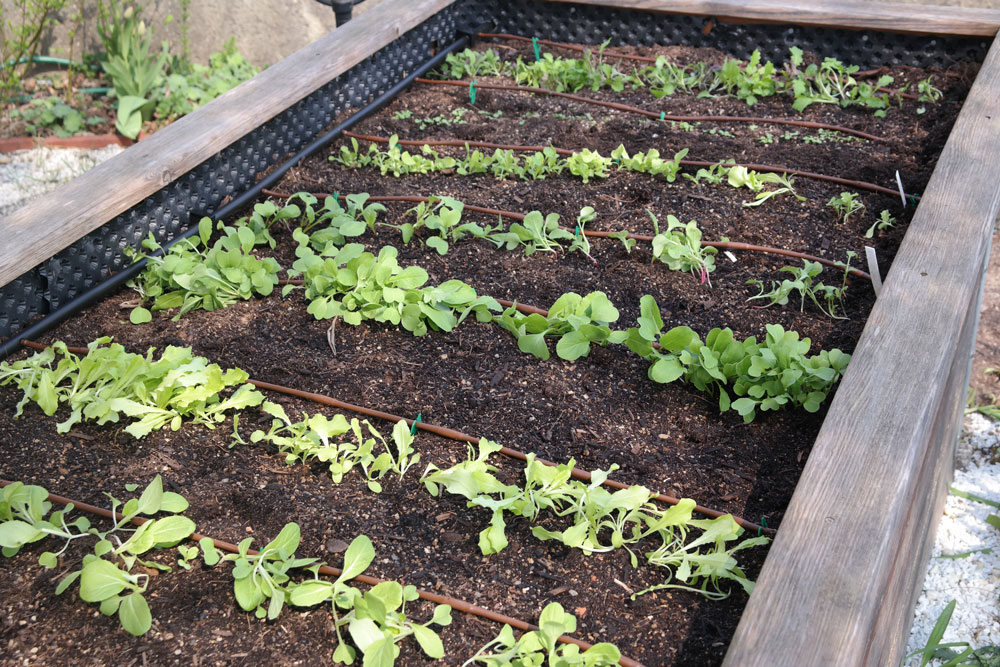
Mulching: Heat protection for soil and plants
Simple, little effort and indispensable during a hot summer: mulching. With it you protect soil and plants from drying out. Dry cracks, as on open ground, which lead to rapid evaporation of water, are a thing of the past. So always keep the soil covered with a layer of mulch. Many garden materials are suitable for this purpose: grass cuttings (be careful, only apply a thin layer to prevent rotting), crop residues (e.g. the green of carrots, kohlrabi leaves, etc.) or plucked weeds as long as they have not yet formed flowers.
Bark mulch is very often used as commercially available mulch material. Avoid it in the vegetable garden – it acidifies the soil and inhibits the growth of your vegetable plants. An excellent mulch material for vegetable gardens, roses, fruit hedges and perennial beds is miscanthus mulch (dried, shredded elephant grass, also called Chinese reed). It keeps the moisture in the soil, stores water itself, nourishes earthworms and is also unpleasant for snails.
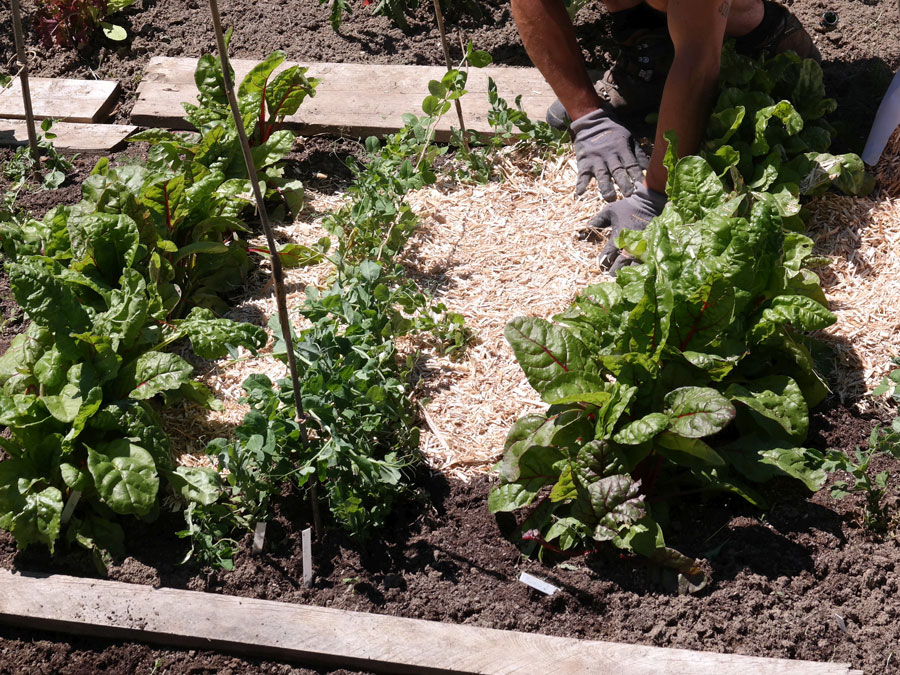
Combine mixed cultivation, irrigation, shade and mulch – your plants will survive any hot summer.
Article and photo credits: DI Doris Kampas





